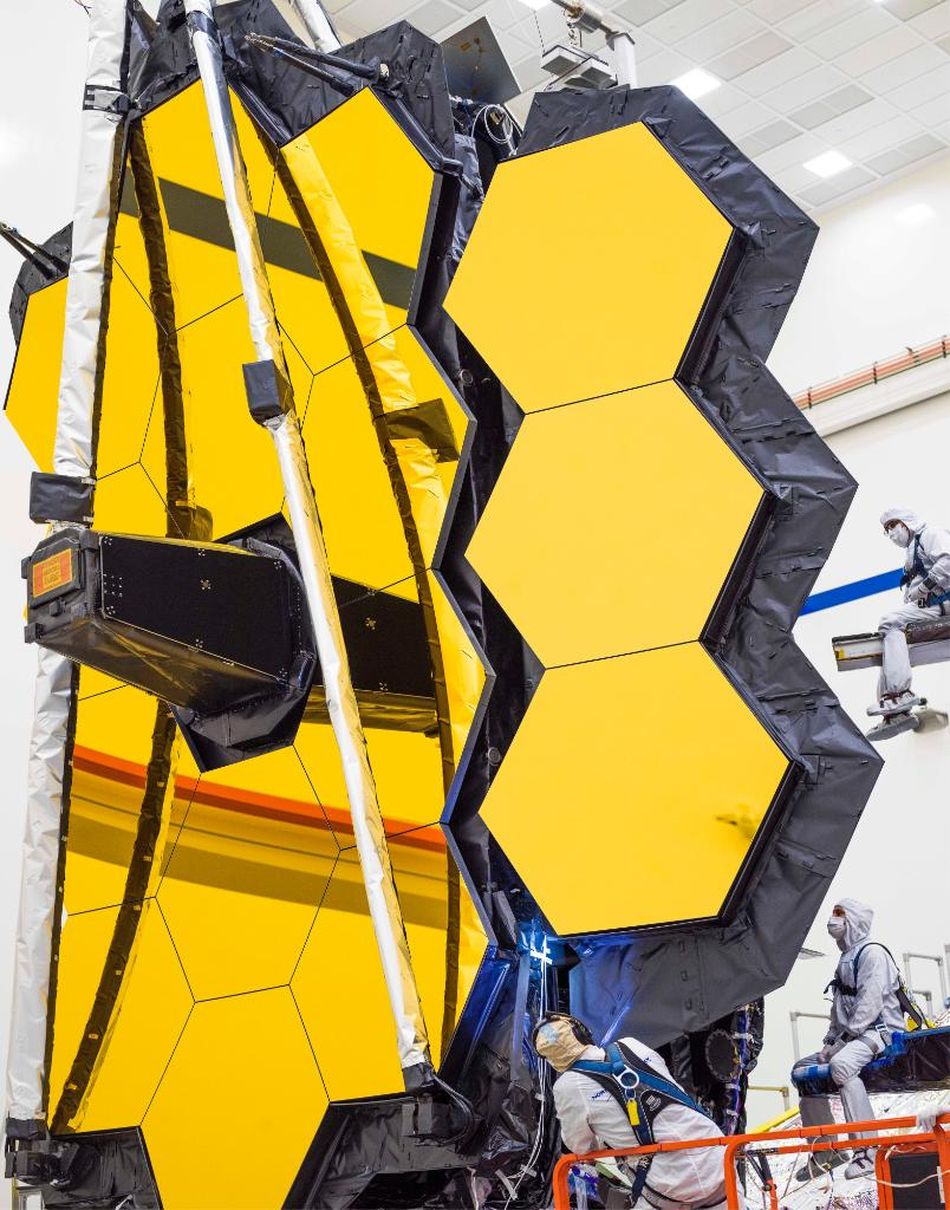Engineers commanded the James Webb Space Telescope to unfurl its over 21-foot wide golden mirrors this week, and the crucial test succeeded.
The test, shown in the image below, was the last check on the sprawling telescope’s moving parts under space-like conditions. James Webb, set to launch in Oct. 2021, is the largest, most powerful space telescope ever built. It’s the next generation of space telescope, furthering the legendary observations made by the aging, over 30-year old Hubble telescope.
After launching into space, Webb’s 18 hexagonal mirrors will align to form a “single, precise mirror,” NASA engineer Lee Feinberg said in a statement. “The primary mirror is a technological marvel,” Feinberg said.
“The primary mirror is a technological marvel.”
For perspective about the size of the mirror, two engineers are seen in the bottom right of the photo, which was snapped at a Northrop Grumman testing control room in Southern California. (The telescope’s overall design and construction, however, is a collaboration between NASA, ESA, and the Canadian Space Agency.)

The James Webb Telescope’s mirrors.
Image: NASA / Chris Gunn
The world’s most powerful space science telescope has opened its primary mirror for the last time…
…on Earth.
As part of its final tests, the international space telescope’s mirror was expanded and locked into place, just like it would in space 👉 https://t.co/P7RUYwuqn2 pic.twitter.com/ae8t5BTkS6
— ESA (@esa) May 12, 2021
James Webb, named after NASA’s leader between 1961 and 1968, is big for reason. Bigger mirrors capture more light, and more detail. As NASA explains:
“To observe objects in the distant cosmos, and to do science that’s never been done before, Webb’s mirror needs to be so large that it cannot fit inside any rocket available in its fully extended form. Like a piece of origami artwork, Webb contains many movable parts that have been specifically designed to fold themselves to a compact formation that is considerably smaller than when the observatory is fully deployed. This allows it to just barely fit inside a 16-foot (5-meter) rocket fairing, with little room to spare.”
The $9.7 billion telescope has been hit by numerous delays and massive cost overruns for years. But it’s also an unprecedented space telescope. Its foldable mirrors are some two and a half times larger than Hubble’s eight-foot mirrors. The mirrors sit atop a light-blocking base, called a sunshield, which is about the size of a tennis court.
Crucially, James Webb won’t orbit Earth. The giant space telescope will orbit the sun in deeper space, some 1 million miles away.
SEE ALSO: The space race forged immortal rock and roll guitars
It’s all happening. Even if it required patience.
“The James Webb Space Telescope is the most ambitious and complex astronomical project ever built, and bringing it to life is a long, meticulous process,” European Space Agency director Günther Hasinger said in a statement last year. “The wait will be a little longer now but the breakthrough science that it will enable is absolutely worth it.”
[embedded content]
